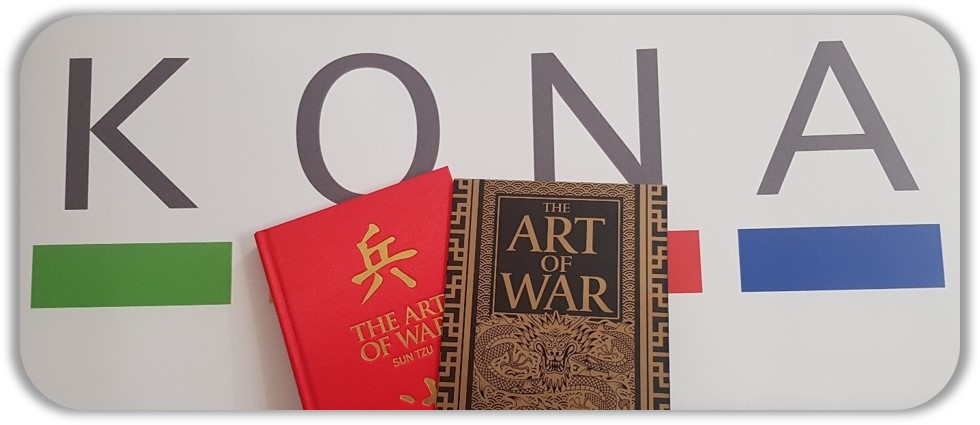
- Organisations must consider how the current crisis will also change long-term interactions, events, personal contacts and what products and services will better serve them in the new post COVID-19 world.
- A Team Strategy Profile is an essential process that helps set a future for your business as well as ensuring you have set steps in place to determine how best to achieve it.
- Smart companies will adopt a proactive approach to understand what changes will occur and be ready to adjust their products, services, and strategies quickly to meet current and future customer needs.
- A Team Strategy Profile ensures you consider the business holistically, with a focus on:
- Mission Identification– what is the purpose of your business
- Vision Clarity – clearly outline in one sentence what you want to achieve
- Plan and Do – what steps will you take to achieve your vision and action it
To find out more contact the KONA Group 1300 611 288 | info@kona.com.au
The question going forward is, when will customers come back? But even more important, what will your Sales team need need to deliver differently in terms of product and service or features and benefits? COVID-19 is dramatically changing consumer and business behaviours today. Undoubtedly, many of those behaviours will remain long after the defeat of the virus. Many people will certainly have higher sensitivity to germs and the risks of spreading infections. This behaviour alone will change many industries. Customers and workers will be more sceptical of close contact with others. Consumer travel, dining, entertainment and product preferences will be different moving forward. The list of changed behaviours and their impact will surely be long, though still to be formed as COVID-19 runs its course.
The number of behaviour changes will grow depending on how many people are directly affected, how severely and for how long. Many new behaviours will be normalised as customers practice them repeatedly over months.
Many people will certainly have higher sensitivity to germs and the risks of spreading infections. This behaviour alone will change many industries. Customers and workers will be more sceptical of close contact with others. Consumer travel, dining, entertainment and product preferences will be different moving forward. The list of changed behaviours and their impact will surely be long, though still to be formed as COVID-19 runs its course.
The number of behaviour changes will grow depending on how many people are directly affected, how severely and for how long. Many new behaviours will be normalised as customers practice them repeatedly over months.
HOW WILL BEHAVIOURS SHIFT IN YOUR INDUSTRY?
 Many customer behaviour changes will require new or modified products and services. New market leaders will emerge while some past leaders fade. Many companies will struggle post COVID-19.
Many customer behaviour changes will require new or modified products and services. New market leaders will emerge while some past leaders fade. Many companies will struggle post COVID-19.
A PROACTIVE BUSINESS APPROACH IS NEEDED TO SURVIVE COVID-19.
To find out more contact the KONA Group 1300 611 288 | info@kona.com.au
Knowing your customers needs is always the best way to meet market demands and win—but what you knew before may not serve you well in an altered tomorrow. Smart companies will adopt a proactive approach to understand what changes will occur and be ready to adjust their products, services and strategies quickly to meet current and future customer needs. THREE IMPORTANT STEPS TO TAKE NOW:1) DEBRIEF
Have a Sales Strategy Session with key members of your team and debrief them on what they have been hearing from customers. Having a strategy session to identify what might be changing and importantly, what you don’t know about the “changes” will set the stage for the next step.DO YOU HAVE A POST-COVID EVOLVE PLAN?
2) GATHER INSIGHT Develop a plan to take to the marketplace. How can we validate new behaviours we are seeing and hearing, and gather the information we don’t know? Don’t assume anything. Your customers can tell you what they will need, but you must ask them. In this time of rapid change, it’s critical to conduct customer interviews, surveys, market research or customer feedback by other means. Gather the comments, attitudes, and data, then analyse. And be objective, that is, be open to things you may have never thought would occur, and to how it can impact your sales and targets! TIP: When interacting with customers during this difficult period, train your people to open conversations with, “How can we help you get through this?” rather than, “Here’s what we’ve got.” In other words, lead with empathy not competence. Try to be part of the solution to their crisis.To find out more contact the KONA Group 1300 611 288 | info@kona.com.au
3) RE-PLAN YOUR SALES PIPELINE STRATEGY
You have your 2020 plans, but clearly COVID-19 requires forward thinking, new strategies and re-planning on many fronts. Armed with these new insights from the marketplace, re-plan and prioritise strategies and tactics in all critical areas. Understanding what your customers will value in the post-COVID-19 business world and acting on it will ensure your survival and success and put you ahead of major competitors.
These points cannot be over-emphasised – knowing the customer will sort the post-COVID-19 business winners from the competition.
Understanding what your customers will value in the post-COVID-19 business world and acting on it will ensure your survival and success and put you ahead of major competitors.
These points cannot be over-emphasised – knowing the customer will sort the post-COVID-19 business winners from the competition.
DOES YOUR TEAM KNOW HOW TO PROFILE THEIR CUSTOMER and DO THEY HAVE A CUSTOMER DNA ACCOUNT PLAN?
To find out more contact the KONA Group 1300 611 288 | info@kona.com.au
HISTORICAL POST-COVID-19 BUSINESS IMPACT
History provides validation that major changes will occur. Look back at 9/11 or even the financial crisis of 2009. The post 9/11 world brought us tighter airport security and increased security measures at everything from sporting events and concerts to large office buildings in major cities across the globe. Behaviours changed, industries were changed and created, and they will be again. Many believe that COVID-19 will affect more people and businesses directly and will have a more far reaching impact on businesses of all types than any crisis in the past half century. BOTTOM LINE
DOES YOUR BUSINESS HAVE A STRATEGY?




















 Very few of a company’s top executives were signed up for executive coaching sessions unless there was an underlying performance concern
There was almost always a company-sponsored Australian sales training courses or
Very few of a company’s top executives were signed up for executive coaching sessions unless there was an underlying performance concern
There was almost always a company-sponsored Australian sales training courses or 






































































